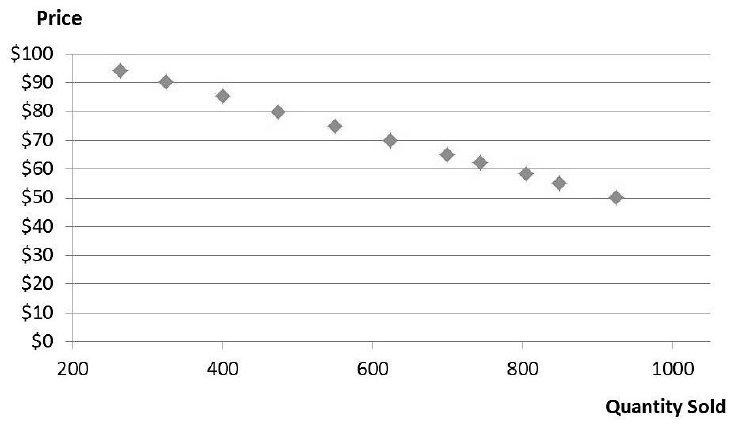Negative reciprocity:
a. is used as a means of obtaining things a group sometimes produces themselves.
b. is usually motivated by the desire to obtain material goods at minimal cost.
c. never takes the form of barter.
d. occurs when both sides make an equal exchange.
B
You might also like to view...
In "Advice for Developers," Alverson observes that the Tswana see time as
a. lineal. b. connected to events. Time happens when events happen. c. a non-concept. The Tswana do not think in terms of time. d. measured by a cycle of ritual occasions.
Refer to the scatter diagram below. The diagram suggests which of the following?

The scatter diagram above shows the actual data for the price and quantity demanded of a product.
A) The true demand is likely to be linear it the natural logarithms.
B) The estimated demand curve will have a positive slope.
C) A straight-line demand curve will likely be the best fit.
D) A nonlinear demand curve will likely be the best fit.
The greenhouse effect is a natural phenomenon that keeps the earth's surface warm. Without greenhouse gases—water vapor, carbon dioxide, methane, nitrous oxide, halocarbons, and ozone—life as we know it wouldn't exist. The current problem is that
A. most scientists dispute the anthropogenic reasoning for high concentrations of greenhouse gases. B. the atmospheric concentration of greenhouse gases has reached its highest level in 400,000 years and will continue to rise, as will global temperatures, without actions to slow it down. C. scientists cannot agree on a general model of how the greenhouse effect went from being a positive to a negative and a life-threatening force. D. global warming actually benefits 90 percent of the world's population, so it is difficult to mobilize the will to address the anthropogenic causes of climate change. E. it is difficult to distinguish between climate change and global warming.
The trickster tales, such as the Br'er Rabbit stories of the American South, may be seen as:
a. A thinly veiled protest against oppression and domination. b. No more than foolish stories that have no real significance. c. A product of a society with limited interest in verbal folklore. d. The protest of the little worker against the modern bureaucracy. e. Particularly characteristic of an egalitarian society.